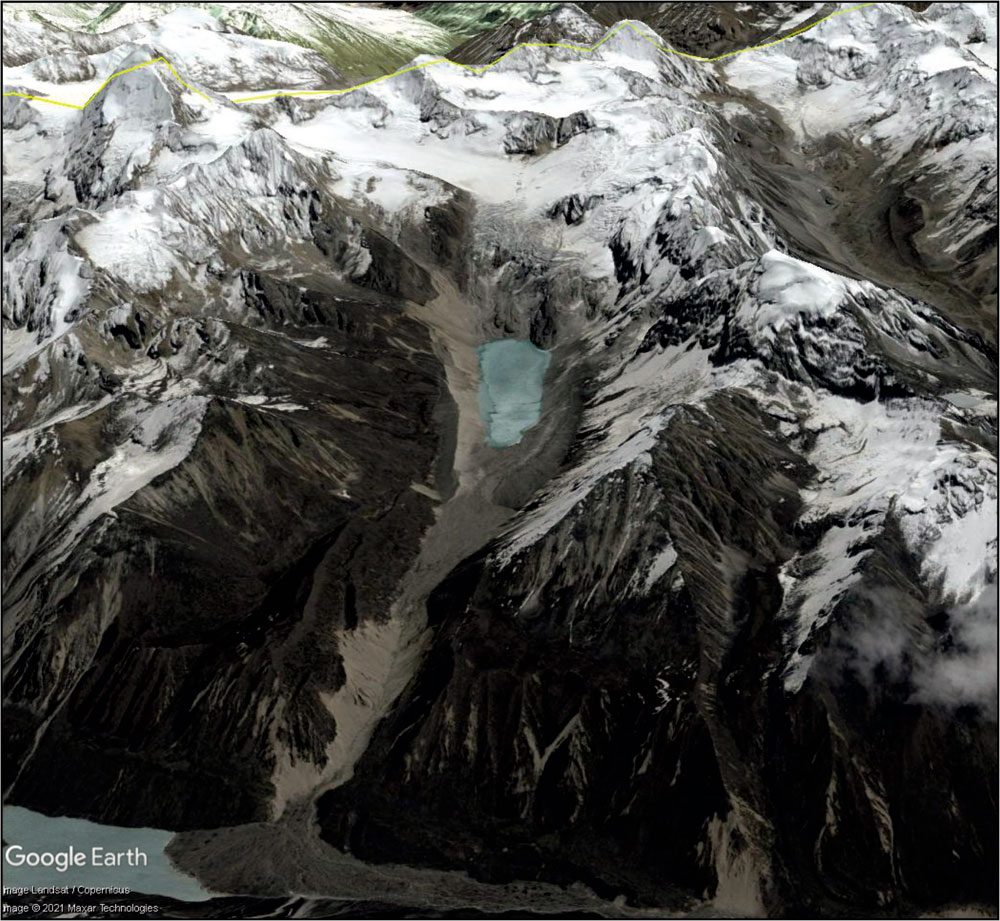New Glacial Hazard Assessments of Pumqu & Poiqu Catchments, Tibet/Upstream Nepal
BREAKING NEWS!

RIL is pleased to announce the forthcoming publication of two detailed glacial hazard assessments for the Pumqu (Tibet)/Arun Valley (Nepal) and the Poiqu (Tibet)/Bhote Koshi (Nepal) catchments. These represent comprehensive, detailed, assessments of the glacial hazards within each of these two major catchments each of which lies upstream of cascades of multiple major hydropower schemes within Nepal.
Unlike previous studies, these new investigations involve the application of the very latest analytical methods, thorough identification of past Glacial Lake Outburst Floods (GLOFs), and utilisation of the very latest, soon to be published, revised Multi-Criteria Analysis assessments of the current glacial hazards within these two catchments. Where serious hazards are identified, new numerical modelling of the effects of landslides into these lakes and the consequential derived output hydrographs are used as input to 2D flood modelling to determine the peak flow rates along their routes downstream. Each assessment will be managed by the world expert on glacial hazards and thus these studies represent the Platinum Standard of assessments that are not available from anywhere else in the world.
As a FREE bonus for each set of assessments commissioned, a headline overview of other geohazards within the catchments selected will be provided as a starting point for The World Bank-recommended Integrated Geohazard Assessments (IGA) for catchments upstream of major hydropower facilities. This will provide a flavour of what can be identified through having an IGA undertaken. More detailed IGA investigations can be commissioned at additional cost.
The first set of each glacial hazard assessment commissioned will be available at a 25% discount and can be reserved with a down payment of £25,000 (GBP). The final cost of each assessment will depend on the total catchment areas required within the assessment and the run-out distance required downstream of any model. Once the first discounted glacial hazard assessments have been commissioned the prices will revert to the undiscounted amounts.
Where existing hydropower schemes take up this offer, they may be able to attract a substantial discount in their annual premiums from their insurers as long as these studies are kept current annually. Furthermore, where such studies have been undertaken previously, hydropower scheme Risk Registers and Disaster Risk Management Action Plans can be improved thereby increasing the resilience of the schemes to the impacts of GLOFs and potentially of other extreme events that can prove to be highly destructive and costly both in terms of human life and infrastructure damage. A prime example of a recent case of this from a lethal major rock avalanche and debris flow is that from 7th February in the Chamoli District, Uttarakhand, northern India. Don’t let your hydropower scheme be the next victim of an extreme physical event!
Ensure you take advantage of the 25% discount by being the first to commission a glacial hazard assessment of either or both of these two major catchments in the Himalayas.
For further details, please contact RIL via the web-contact form on www.reynolds-international.co.uk or directly by email to info@reynolds-international.co.uk.
